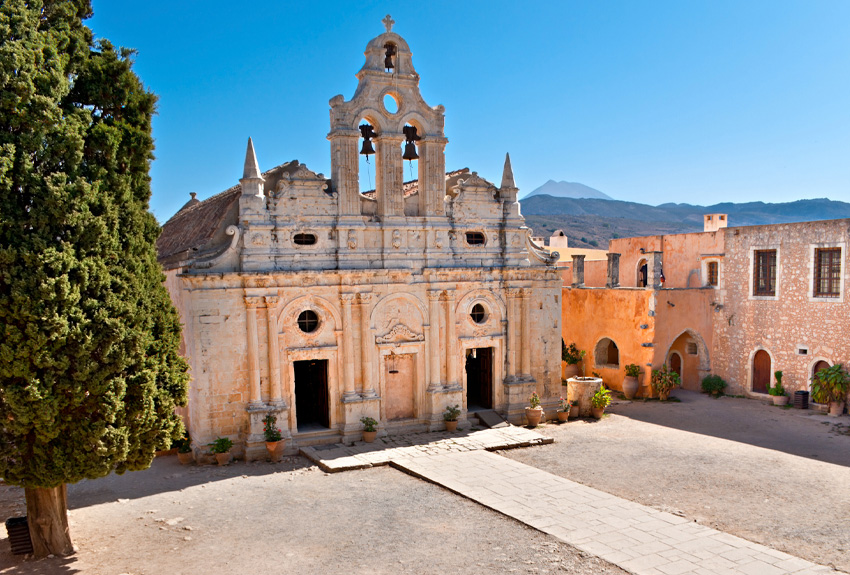
Arkadi Monastery
Rethymnon
Nestled amidst the picturesque landscapes of the island of Crete, Arkadi Monastery stands as a testament to centuries of rich history, profound spirituality, and enduring resilience. Renowned as a symbol of Cretan resistance and an enduring emblem of freedom, Arkadi Monastery holds a significant place in both religious and historical narratives. From its architectural grandeur to its powerful historical legacy, Arkadi Monastery continues to captivate visitors from around the world.
The origins of Arkadi Monastery date back to the Byzantine era, with the exact founding year shrouded in the mists of time. It is believed to have been established during the 5th or 6th century, although the monastery as it stands today primarily reflects architectural styles from the 16th and 17th centuries. Over the years, the monastery has undergone numerous renovations and expansions, blending Byzantine, Venetian, and Ottoman influences.
Arkadi Monastery is most widely known for its pivotal role in the Cretan struggle for independence during the 19th century. In 1866, Crete was under Ottoman rule, and the monastery became a refuge for Cretan rebels fighting for freedom. During the famous Battle of Arkadi in 1866, the monastery became a bastion of resistance against the Ottoman forces.
The battle ended tragically, with the monastery besieged by the Ottomans. Rather than surrendering, the defenders of Arkadi, including monks, civilians, and fighters, chose to ignite barrels of gunpowder, sacrificing themselves and causing a massive explosion. This heroic act, known as the "Arkadi Holocaust," resonated deeply with the people of Crete and the international community, ultimately bolstering the Cretan cause and inspiring further resistance.
The architectural beauty of Arkadi Monastery is a harmonious blend of Byzantine, Renaissance, and Baroque elements. The central church, dedicated to the Transfiguration of Christ, boasts intricate frescoes, splendid iconostasis, and a magnificent bell tower. The monastery complex also houses chapels, cells for the monks, a refectory, and a museum that displays religious artifacts, manuscripts, and historical documents.
Arkadi Monastery continues to be an active religious site, attracting pilgrims and visitors seeking solace, contemplation, and spiritual connection. The peaceful aura of the monastery, combined with its historical legacy, lends a unique atmosphere that fosters reflection and reverence. The monastery follows the Orthodox Christian tradition, and visitors can witness or participate in religious services, which offer a glimpse into the profound devotion and spirituality that permeates this sacred space.
Beyond the monastery's walls, the Arkadi region offers stunning natural beauty, making it an ideal destination for nature enthusiasts. The surrounding hills and fertile valleys provide ample opportunities for hiking, while nearby traditional villages provide glimpses into local Cretan culture and hospitality. The region is also renowned for its olive groves and vineyards, allowing visitors to savor the local produce and culinary delights.
Arkadi Monastery has been recognized as a National Monument of Greece, emphasizing its historical, cultural, and architectural significance. The dedication to preserving the monastery's legacy is evident in ongoing restoration efforts and the careful curation of its historical artifacts. These initiatives ensure that future generations can continue to appreciate and learn from the rich heritage encapsulated within its walls.
Arkadi Monastery stands as a timeless symbol of faith, courage, and resilience. From its remarkable historical significance to its architectural splendor and spiritual resonance, it remains a captivating destination that invites visitors
